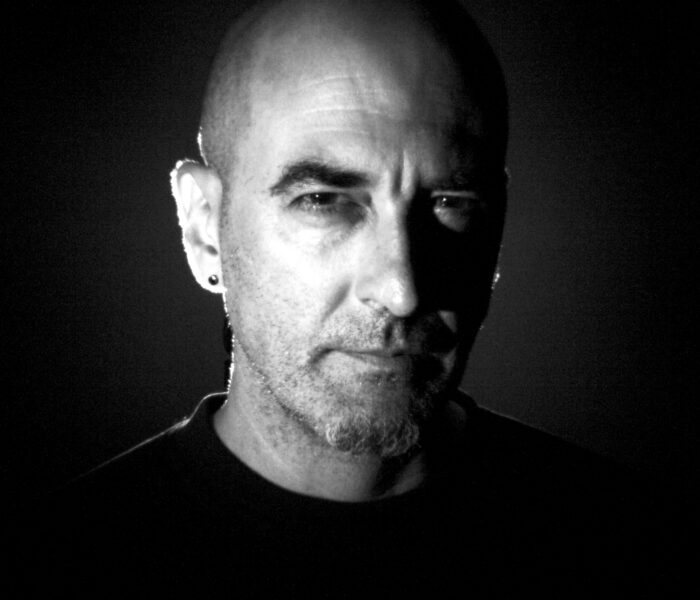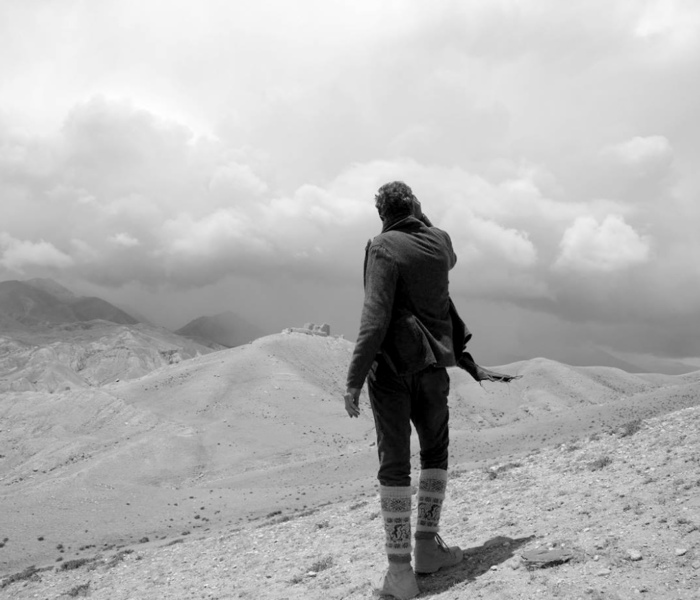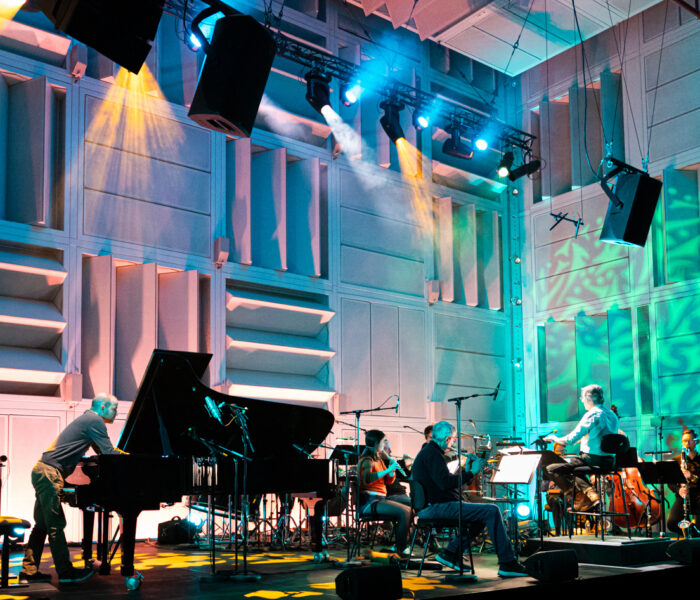Second anniversary evening for L'Itinéraire, celebrating its half-century in style: after a ten-day residency at the Festival Messiaen, the ensemble is welcomed by the Ircam team at Espro, the ideal place for this phalanx dedicated to mixed music to project sound and light.
World premiere music by two female composers, Núria Giménez Comas and Natasha Barrett, rubs shoulders with that of the ensemble's founders and first members, Michaël Levinas and Hugues Dufourt, and is joined by a 1988 Radio France commission to Briton Jonathan Harvey for L'Itinéraire.
The audience settles in, while Núria Giménez Comas's piece Llum i matèria (for Kaija) has already begun. The Catalan composer makes us listen to the surrounding murmur, that of the audience soon dominated, as amplification helps, by the murmur of the instrumentalists, some of whom are seated in the side aisles, close to the listeners; a buzzing wave that makes sound happen and the light that irises and diffracts it. With Léo Margue discreetly seated on the podium, the sound spectrum slowly unfolds, fragile particles where the boundary between instrumental playing and fixed sounds is erased in favor of the colors and constellations distributed throughout the space. The piece shifts midway: " Light and heaviness ", wrote Kaija Saariaho, to whom the piece is dedicated. She introduces a darker landscape and grain, a more arid nature (asperities in the strings) shaken by disquieting signals; a sound that sinks into a vertiginous silence, measured, emotionally, by the lament of a lonely piccolo: sensitive as well as striking!
Strange and no less captivating, Désinences (2014) by Michaël Levinas, co-founder of L'Itinéraire, are exploratory studies in which the composer invites us to listen to the interstitial spaces between the piano keys: the transients of attack (élan) and the fallout of sound (désinence); an in-between that the microtonality obtained on midi keyboards enables us to better control. The piece features the ensemble's two pianists, Fuminori Tanada and David Chevalier, alternating between piano and digital keyboards. An eminent pianist, Levinas mentions in his notice of the work the use of half-pedal and specific legato techniques to move towards the continuum of sound (slippage of inflections) that he calls for. Tangled lines bathed in resonance encourage beats between frequencies, giving rise to what he calls the "tears of sound". Instability and blurring of pitches on descending and ascending flows, harmonic-polyphonic braiding of scales feed an edge-less matter giving rise to unsettling emergence effects.
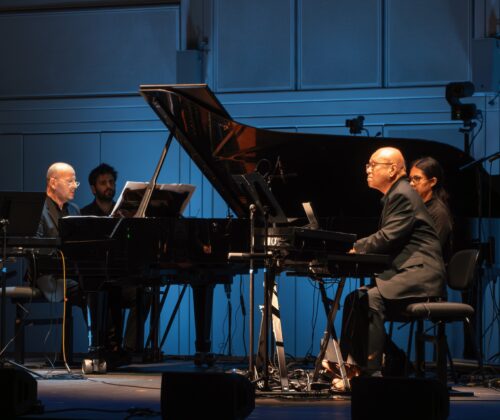
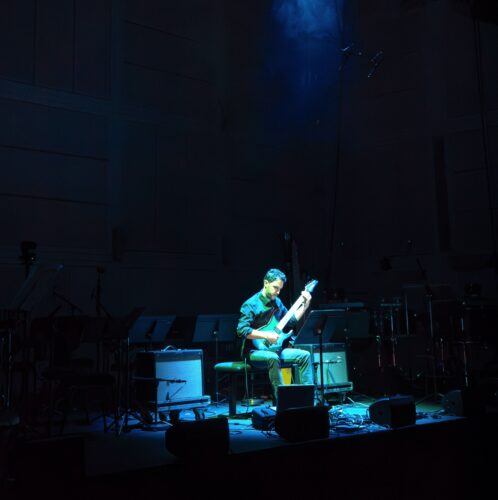
In Jonathan Harvey's Valley of Aosta (1988), which concludes the first part of the evening, the two harps are tuned a quarter-tone apart, as are the two DX7 synthesizers, computer-controlled MIDI instruments for which the composer writes cadences of extravagant sonic bubbling. The piece, inspired by Turner's painting of the same name, is a masterpiece of orchestration and accomplished interweaving of instrumental writing and synthesized sounds: " The harmony is atomized, pulverized, letting the light filter through," comments the composer, who proceeds, like the painter on the canvas, to dematerialize the form. In perfect synergy, Léo Margue and the thirteen musicians of L'Itinéraire give it a galvanizing vitality and kinetic energy.
Aurélio Edler-Copes is alone on stage in La Cité des saules (1997) for electric guitar and sound transformation, which opens the second part. Less jubilant, the work takes a more contemplative approach, in which the instrumental gesture fades into the background in favor of the sound phenomenon (flat areas of colored chords) and its future: " There is no motif, no figure, no contour [...]", warns the composer. All that matters is the process of spatialization and the transformation of sound. A victim of technological obsolescence that condemned the work to silence, La Cité des saules is now the subject of a new version with digital transformation; Aurélio Edler-Copes is credited with producing the patch on Max/MSP. Magnified by the acoustics of the Espro, the piece invites the kind of acute listening experience that this aesthete of sound loves to elicit.
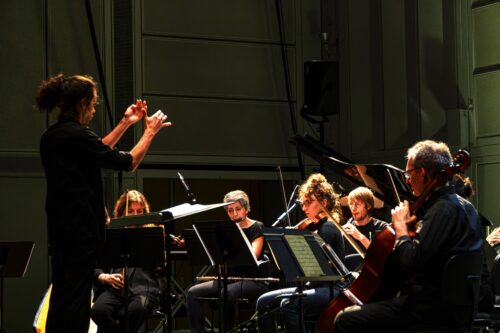
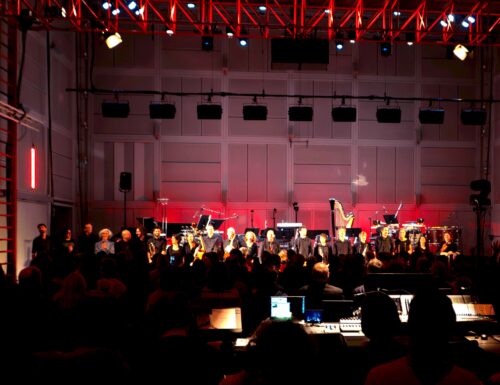
City lights
Shimmering Cities, for sinfonietta, live electronics and immersive electroacoustic universe, by British composer Natasha Barrett is the highlight of this evening of light. Well-versed in spatialization techniques and familiar with Espro's ambisonic dome, she composes space with astonishing virtuosity, maintaining the back-and-forth and cross-fades between outside (field-recording) and inside (instrumental writing), listening levels that modify space and temporality; she sometimes superimposes them in what she calls her spatial counterpoints. The instrumental writing is abundant: highly inventive object music that elicits images: a motley assortment of colors (percussion is active and its accessories are plentiful), noisy morphologies and multiple signals to give an account of this "symphony of cities" and the thousands of energies that make it up. Barrett takes us away from the city center for a while into a quieter part of the show, with its echoes of nature, birdsong and poetic fragrances. The immersion is total and the listening comfort ideal.
Galvanized by Léo Margue's highly committed direction, the musicians of L'Itinéraire are in top form this evening, working wonders. In a concert in which electronics play a decisive role in the development of each work, the five musicians at the console - Núria Giménez Comas and Natasha Barrett for their respective pieces, Carlo Laurenzi and Augustin Muller from Ircam for the other three, and Luca Bagnoli who supervises the sound diffusion - are also to be commended for their work behind the scenes.
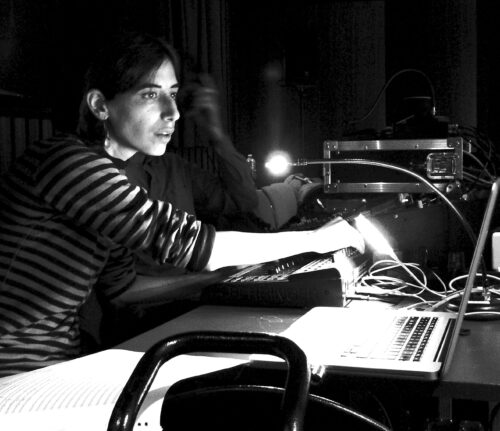
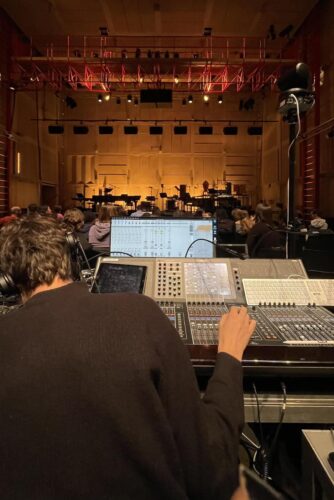
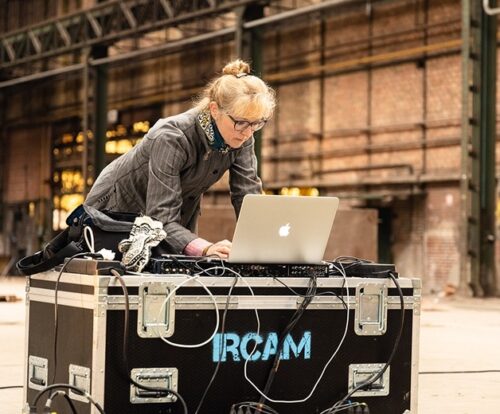
Michèle Tosi
Ircam, Espace de projection - Paris le 18-11-2023
Núria Giménez Comas (b. 1980) Llum i matèria (for Kaija), for septet and electronics (CM); Michaël Levinas (b. 1949): Les Désinences, for piano and midi keyboards; Jonathan Harvey (1939-2012): Valley of Aosta for mixed ensemble and thirteen instruments; Hugues Dufourt (b. 1943): La Cité des saules, for electric guitar and sound transformation; Natasha Barrett (b. 1972): Shimmering Cities, for sinfonietta, live electronics and immersive electroacoustic universe (CM). Fuminori Tanada and David Chevalier, piano; Aurélio Edler-Copes, electric guitar; ensemble L'Itinéraire; Christophe Forey, lighting; Núria Giménez Comas, Natasha Barrett, electronics; Carlo Laurenzi, Augustin Muller, Ircam electronics; Luca Bagnoli, Ircam sound diffusion.
Photos © Antonio Gonima
Photos © Philippe Barbosa



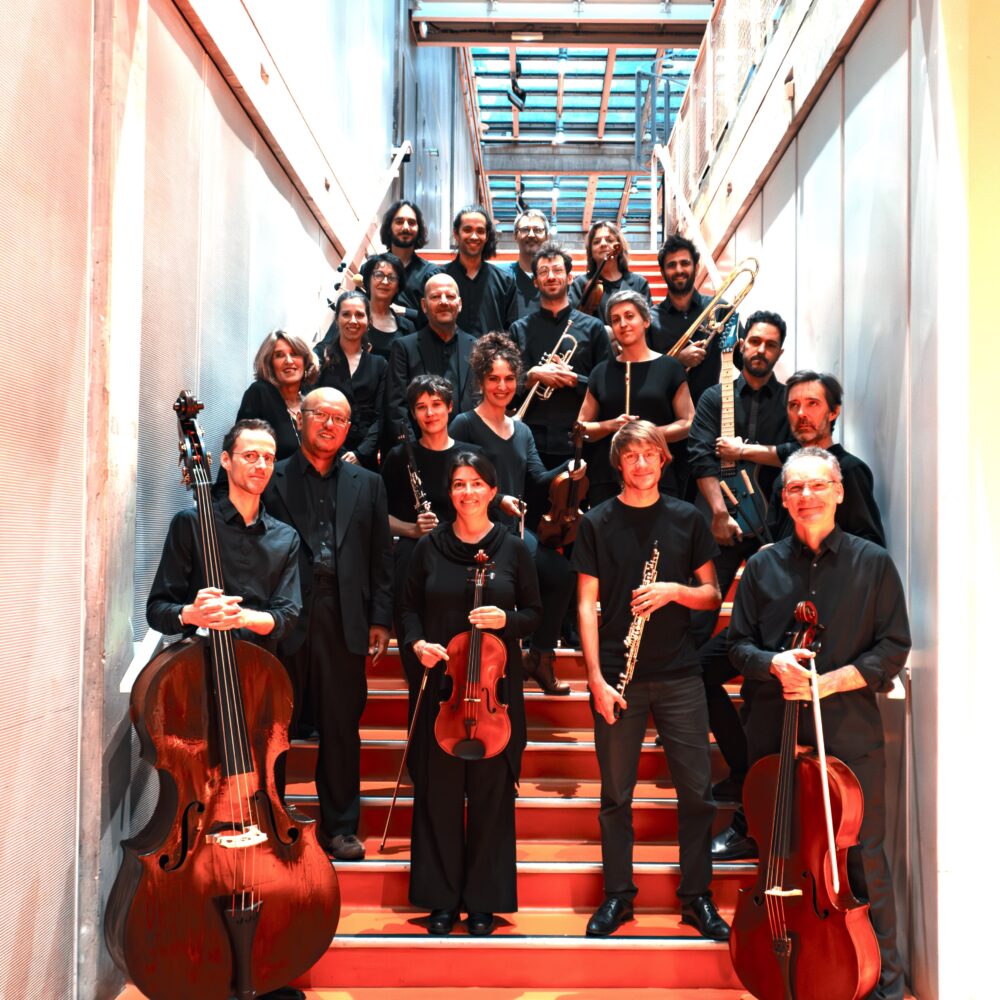)
